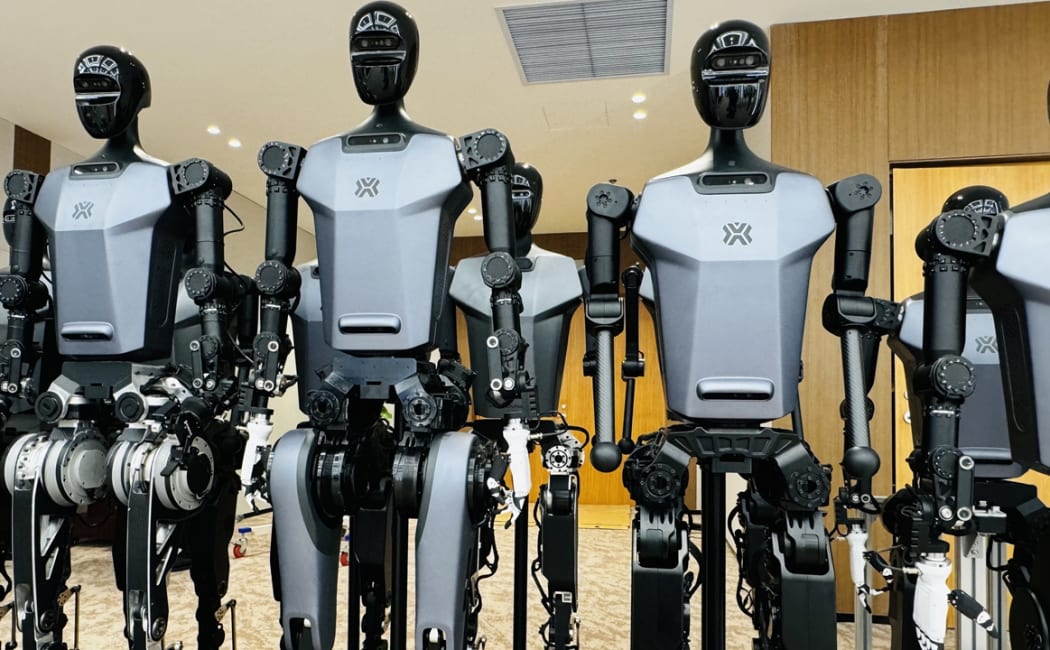Robots Compete, Tumble, and Thrill Crowds at China’s World Humanoid Robot Games

Beijing, China – August 15, 2025: The inaugural World Humanoid Robot Games kicked off in Beijing on Friday, attracting a global audience and hundreds of competitors eager to demonstrate the latest advances in artificial intelligence and robotics. With 280 teams from 16 countries, the three-day event combined sports, innovation, and technical challenges, offering spectators a unique blend of entertainment and technological marvels.
International Teams Gather for the Robot Olympics
The competition saw participation from across the globe, including teams from the United States, Germany, Brazil, and several other nations. Of the 280 teams, 192 represented universities while 88 came from private enterprises. Notable companies such as Unitree and Fourier Intelligence were among the participants, using humanoid robots manufactured by Chinese firms like Booster Robotics.
These games served as both a competitive platform and a testing ground for emerging robotics technology. Organisers noted that the event not only showcased high-performance humanoids but also gathered valuable data for improving practical applications, such as industrial work, logistics, and healthcare support.
Sports and Unique Robotic Challenges
The World Humanoid Robot Games featured an eclectic mix of events. Robots competed in traditional sports such as track and field, football (soccer), and table tennis. They also faced robot-specific challenges, including sorting medicines, handling delicate materials, and performing cleaning services — tasks that reflect real-world applications in factories, hospitals, and public spaces.
One of the most popular events was the football matches, where humanoid robots attempted to coordinate passes, dribble, and score goals. These games often turned into comedic spectacles as robots crashed into each other, lost balance, and occasionally needed human assistance to stand back up.
Humorous and Thrilling Moments on the Field
The games were not without their dramatic — and sometimes hilarious — moments. In one football match, four robots collided simultaneously, ending up in a tangled heap on the field. Meanwhile, in the 1500-metre running event, a robot collapsed mid-sprint while moving at full speed, drawing gasps and laughter from the crowd.
Despite frequent falls, several robots demonstrated impressive resilience by righting themselves without human help, earning rounds of applause from the audience. The organisers stressed that such moments, while amusing, provide critical insights into balance control and autonomous recovery functions in humanoid design.
Insights from Participants
Max Polter from Germany’s HTWK Robots football team — affiliated with Leipzig University of Applied Sciences — expressed enthusiasm for the event. “We come here to play and to win. But more importantly, we’re here for research,” he said. “This competition allows us to test exciting new approaches. If something fails, we lose a game, which is disappointing — but it’s far better than wasting resources on a failed commercial product.”
Why the Robot Olympics Matter
Organisers highlighted that these competitions help improve robots’ coordination and collaboration abilities. For example, football matches require robots to work as a team — skills that can later be applied to assembly line operations where multiple robots need to synchronise their movements.
The data collected from various events will help engineers fine-tune machine learning algorithms, optimise sensor performance, and enhance physical durability for robots operating in real-world environments.
China’s Billion-Dollar Push in Robotics
This high-profile event is part of China’s broader investment strategy in robotics, particularly humanoids, as the nation addresses an ageing population and intensifies its technological rivalry with the United States. In recent months, China has hosted a string of robotics showcases, including what it called the world’s first humanoid robot marathon in Beijing, a major robotics conference, and even the launch of retail stores dedicated solely to humanoid robots.
Analysts from Morgan Stanley recently noted that public interest in robotics is surging in China. Attendance at a recent robot conference far exceeded previous years, signalling how not only government officials but also the wider public have embraced the concept of embodied intelligence.
Ticketed Spectacle for the Public
The World Humanoid Robot Games were open to the public, with ticket prices ranging from 128 yuan ($17.83) to 580 yuan ($80.77). The event venue — Beijing’s National Speed Skating Oval — was filled with spectators who witnessed robots in various action-packed contests, from kickboxing matches to high-speed sprints.
Audiences reacted with a mix of amazement and amusement as robots engaged in complex physical activities, stumbled, recovered, and continued their challenges. These interactions reinforced the human fascination with machines that can move, think, and adapt in real time.
Looking Ahead
With the games serving as a testing ground for innovation, many believe the event will become a recurring global competition. By pushing robots to perform in unpredictable, dynamic situations, engineers can identify weaknesses and improve future designs.
In the coming years, such events may help accelerate the integration of humanoid robots into everyday life — from assisting in warehouses and hospitals to serving in customer-facing roles. As China continues to pour billions into AI and robotics research, the “Robot Olympics” could become a benchmark for measuring progress in the industry.
Conclusion
The World Humanoid Robot Games have proven to be more than just an entertainment spectacle. They represent a fusion of sport, technology, and global collaboration. Whether crashing into each other on the football field, sprinting at high speeds, or showcasing precision in handling delicate tasks, these robots reflect the cutting edge of human engineering creativity.
As competition heats up — both on the field and in the global tech arena — events like these will shape not only the future of robotics but also how society interacts with machines designed to work alongside us.
